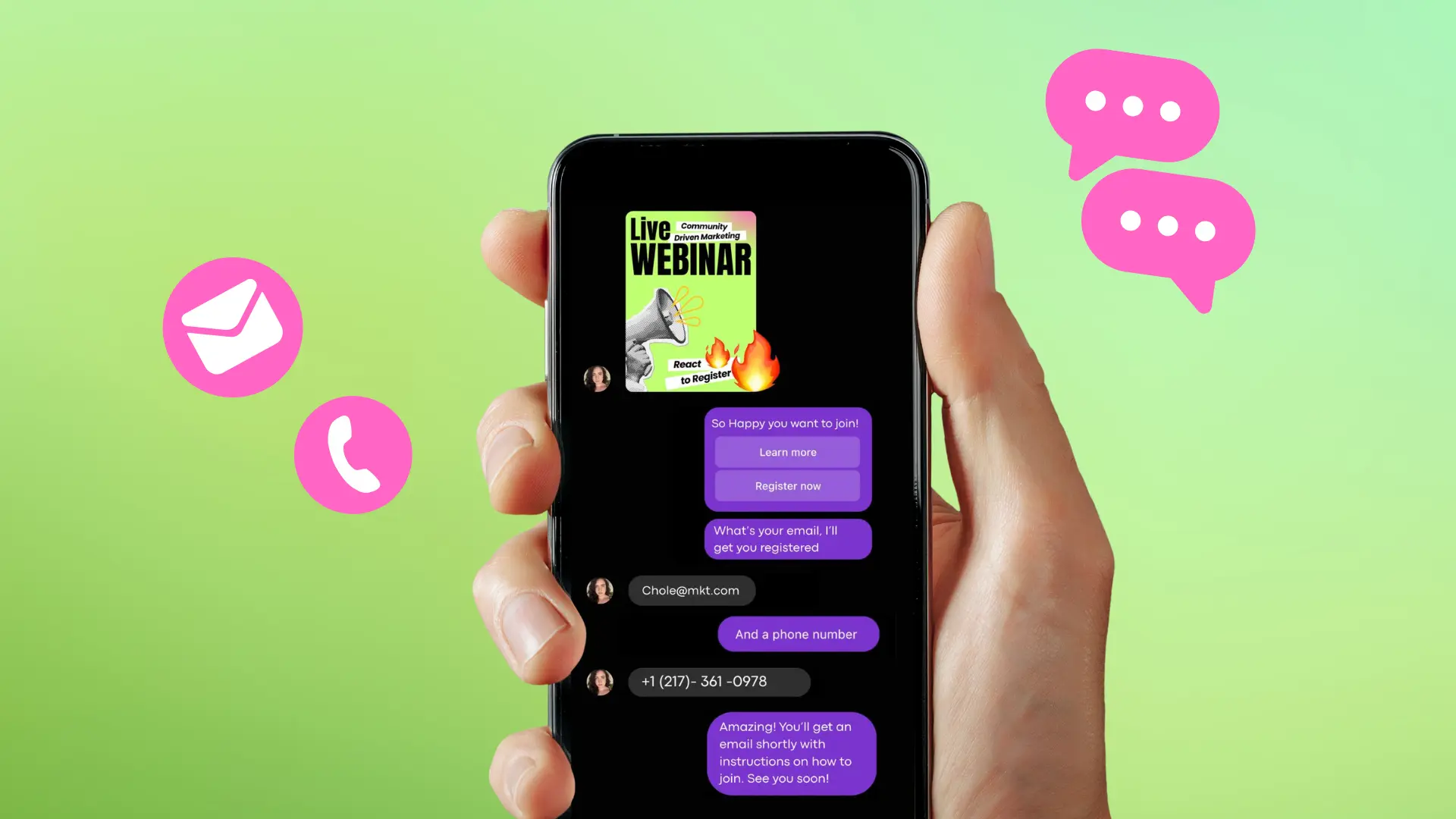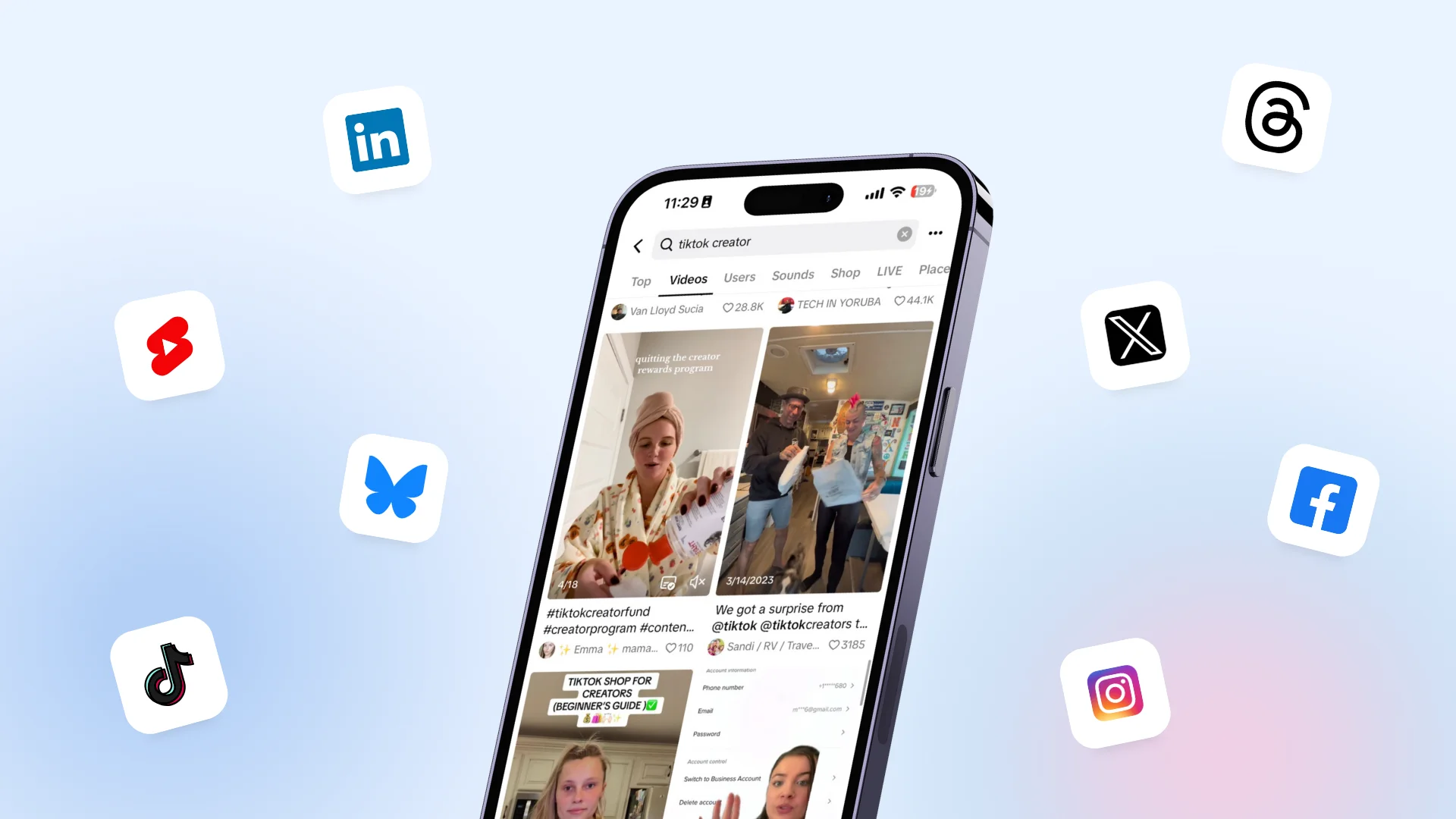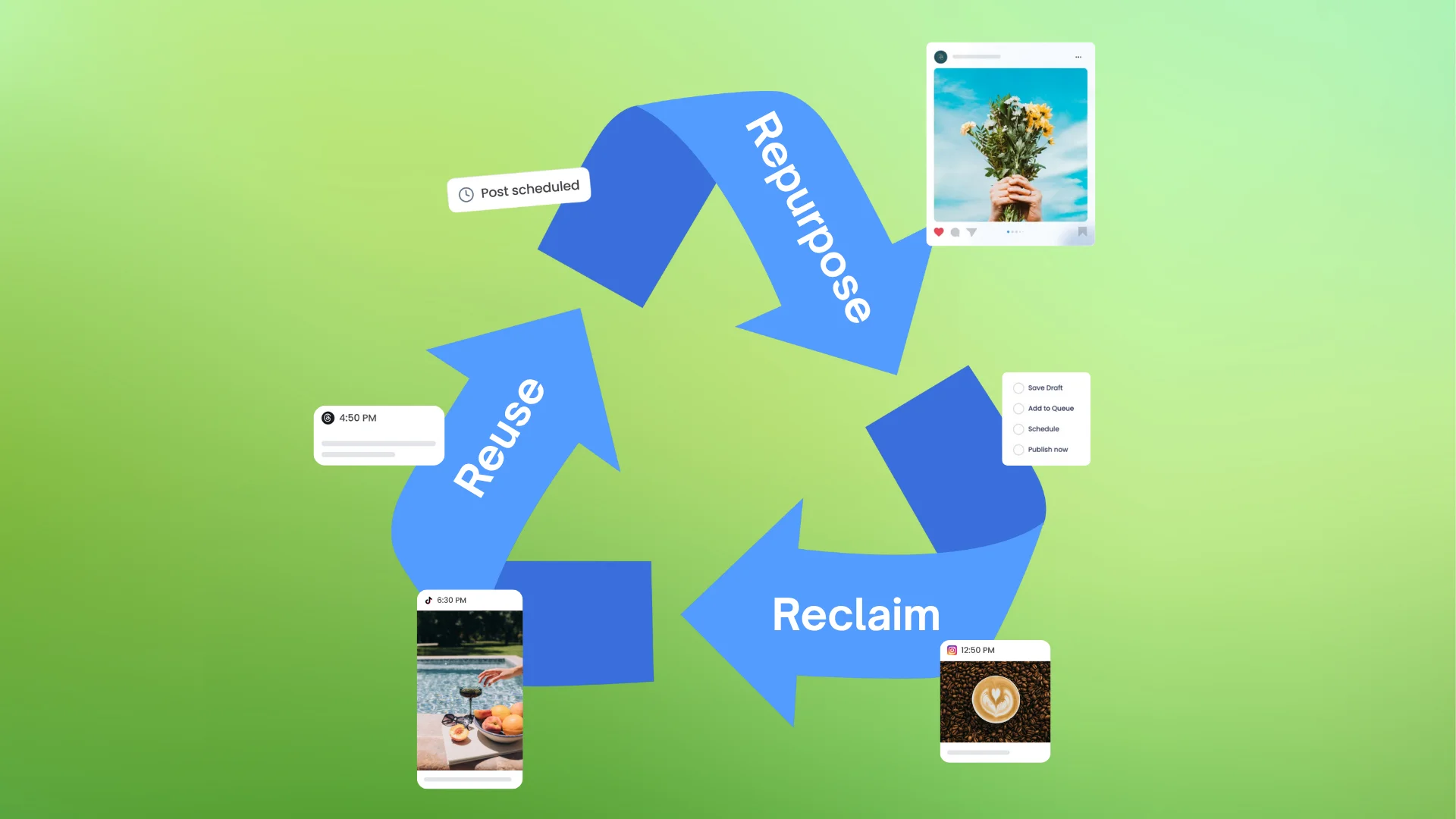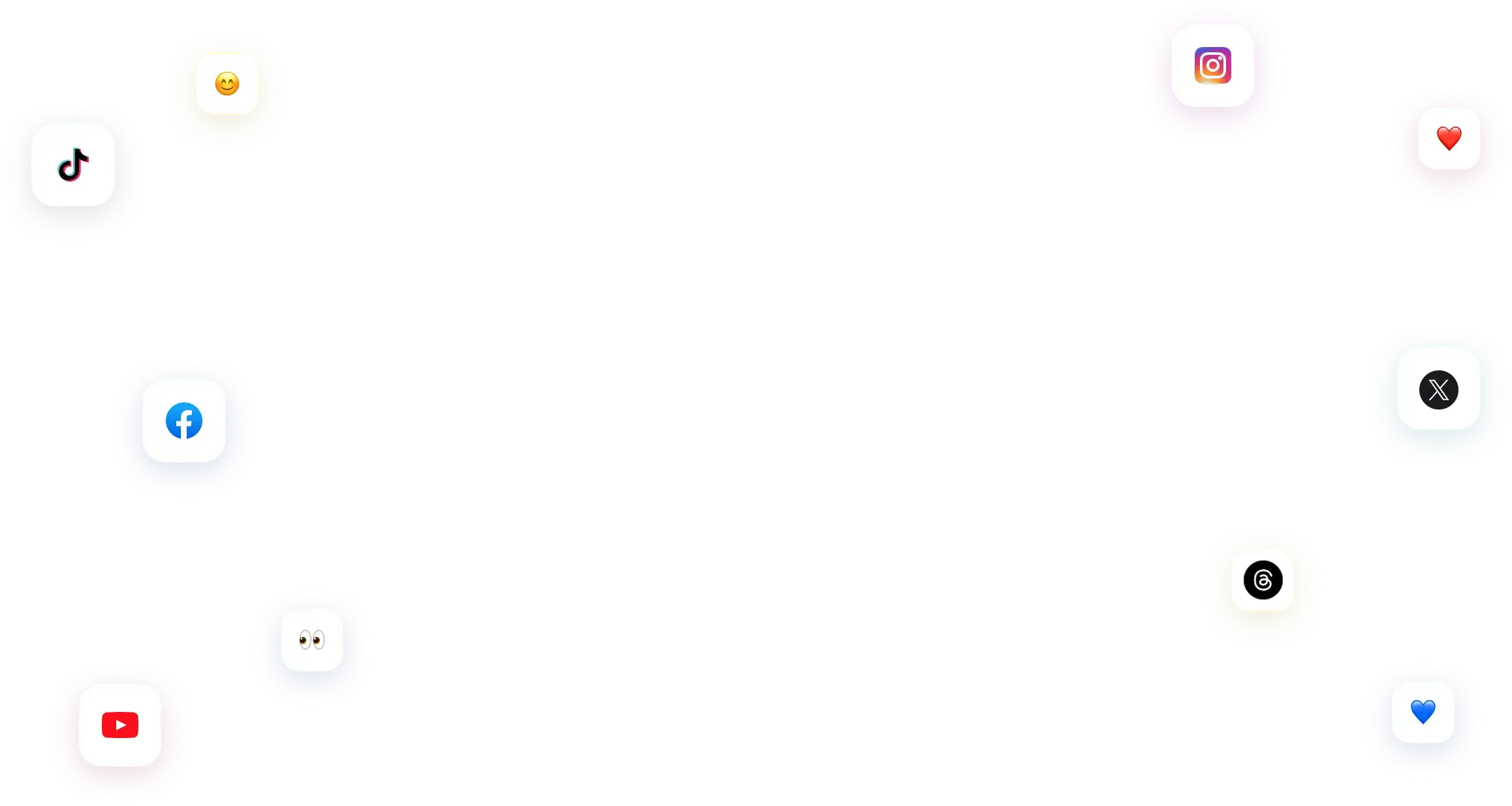New

Turn Your DMs Into Lead Gen!
Learn how to collect lead data from your DMs such as email addresses, phone numbers, and more right from your social inbox. If you are not yet automating your DMs your competitors are outpacing you.

How Something Social Saved 75% of Their Time and Increased Revenue by 15%
See how a fast-growing agency improved operations, cut down hours of manual work, and unlocked new revenue opportunities with Vista Social.
New

50 Unique Social Media Ideas for Consistent Content Creation
Discover 50 unique social media post ideas to engage your audience, grow your brand, and maintain a consistent content strategy with ease!

Mastering Content Reuse: The Key to a Consistent and Sustainable Posting Strategy

Table of Content

Hey, welcome back to the Beyond Social podcast. My name is Reggie, and this is the show where we go behind the scenes on how marketers are doing amazing things on social and how we’re building a tool to support them.
We’ve got Valal here today. Yes, so I’m Valal, I’m head of product here at Vista Social, and we wanted to talk about how brands are treating and thinking about content that is produced on behalf of the brands by their, say, social media management teams. And how much safety and how many checks exist to prevent content that maybe doesn’t quite align with the brand’s perspective on what the brand voice should be, and perhaps in certain situations, doesn’t align with any kind of compliance or legal boundaries that content cannot produce.
Table of contents
The Real-World Challenge: Restaurant Chain Example
I think the examples could be, if in a medical industry, obviously patient data is an issue, how do you make sure that the patient data doesn’t accidentally get published to your socials or in response to a certain message? In the cases of maybe brands that aren’t necessarily subject to any kind of compliance laws, just more broadly, how do you make sure that your team responds in a way that you like them to respond?
Obviously avoiding any sort of profanity, derogatory terminology, just how do you control that, right? Absent, um, actually systems, sort of, like absent any features that allow you to enable this, you’ll really be relying on training and you’ll really be relying on just trusting that your team essentially can implement whatever policy you have in place. So, I mean, let me, let me paint a picture maybe for our listeners because I think it’s easy to think through financial services, right, and the compliance legally around that.
But let’s just say I’m a brand, maybe a chain of restaurants, and the corporation has pretty strict guardrails around not only what should get posted on social, what shouldn’t get posted on social, but really beyond that is how the brand is perceived on social. This comes down to also what do we engage with, so DMs coming in, comments coming in, what does my social media manager respond to, what are the things that they shouldn’t respond to, and when they do, what sort of tone or what sort of things they shouldn’t say, right?
Traditional Brand-Marketer Relationships and Their Gaps
So, your typical relationship between a brand and a marketer or team, right, of marketers that manage social media on behalf of that brand would be one of sort of like a guided understanding of what the brand is about, right. And it’s people coming together and formally or informally deciding on the overall spirit of the messaging that they put out. Overall approach to the way they respond to comments and questions.
Do they joke, when do they try to be a little bit unhinged when they’re responding, do they try to kind of maybe be a little bit extra sort of familiar with the person right when responding. And obviously in these conversations brands and marketers would agree on dos and don’ts, right, when it comes to what is it? You know, that they do and don’t do.
Beyond Traditional Workflow: Proactive Brand Safety
I mean, it almost sounds like it’s going to save steps and time too, because traditionally maybe that workflow you’re talking about is, you know, the social media manager for the brand schedules some content that eventually gets approved by someone or rejected by someone. But it’s almost like we could skip that step by having that system automatically warn the person scheduling, the social media manager, saying, “Hey, listen, um, shouldn’t be able to say this, you’re not going to be able to say that, this is our policy, here’s a reminder,” and then they can make those changes before they even send it out for approval, hopefully.
Really, it could be a combination of both because I think realistically, the content approval workflow doesn’t always exist for the sole purpose of ensuring brand safety or any sort of compliance. It could exist for the purposes of just overall scheduling of content. Are we announcing the feature when the feature is already launched? Are we offering a discount before the discount is due, you know? So there could be lots of reasons why the content needs to get approved.
Training Wheels for New Client Relationships
Is it fair to say that maybe for an agency listening to us that this could almost be like a training wheel when they onboard a new client, maybe the first 30 days, 90 days, when they’re starting to get the sense of what’s okay, what’s not. Because I mean, some of these policy documents are pretty black and white, but some of them are kind of broad and so this could almost be a training wheel where you get that warning from the system every time you draft something that could be considered out of policy or out of compliance, so that by the time it gets in front of the client for approval or just in general, you’re just getting a little bit better at understanding that client’s brand tone or their requirements.
Try Vista Social for Free
A social media management platform that actually helps you grow with easy-to-use content planning, scheduling, engagement and analytics tools.
Get Started NowAgency Self-Preservation and Client Trust
I think it’s in the interest of agencies to have a system like that in place because I would imagine a lot of agencies outsource or employ people to work on behalf of their customers, right? Whereas a customer has let’s say offered an agency their policy, right, some call it the compliance policy, brand safety policy. The cool thing is that you can literally as an agency take that policy, feed it into in this case Vista Social, right, as is, right, no interpretation. You’re literally feeding that in and our AI engine would then assess whether a post or a reply is in compliance with that.
Handling AI False Positives and System Refinement
So let me, let me ask you this, because that the profanity, I think it all those make sense, the cases because we’re talking about AI, I’m going to bring this up. What happens if there’s a mistake by the AI? So let’s say I’m, maybe the compliance says that we can’t use the money sign, right? We’re not allowed to talk about money, we’re not allowed to give quotes to customers. Maybe it’s because I include a percentage sign and in my industry, we’re not allowed to talk about interest rates in a certain format. What happens if the context of what I’m writing is okay for me to have a money sign, but it gets flagged? Like what happens I guess in that case, how do we.
Yeah, so I think you you may kind of, um, alluding to one side of it where I guess this compliant system is too strict and it misfires flagging something is non-compliant where in reality it is compliant. Uh, there is probably also a possibility of compliance checks not, since it is AI, right? Maybe letting through some small percentage of things due to the trickiness of the language maybe, or the trickiness of the, uh, words that are used.
Beyond Content: Comprehensive Communication Coverage
Um, last I looked there are plenty of online resources for what brand safety policies are, plenty of examples, so chances are you may not even have to kind of start from scratch. Um, I do also want to sort of also point out that here we are talking about content going out on behalf of a brand and how that needs to be, um, verified whether it complies, but there are so many other areas, um, such as, for example, responding to DMs, responding to comments, internal teams communication on content, um, generating ideas, um, you also have ability to understand what is it that your teams are having to answer to, right?
The Human Error Factor and Multi-Team Challenges
And notice that a lot of this is going to be handled by different teams. Oh yeah. So your challenge without an automated system of verification is going to be a lot of training and and auditing, let’s be honest. And I’m sure you know, from the support standpoint, uh, mistakes are made. Yeah, information is divulged, people try to respond to questions that they shouldn’t be responding to, and uh and it’s a, it’s a nightmare to deal with these situations and it’s hard to kind of also place blame on people because if you have an agent that responds to you know, a few hundred messages a day, I mean, it’s a human error situation.
Brand Equity Protection: The Stakes Are High
I mean, we’re not going to 100% “Karen” proof your socials, but we’re going to help those “Karen” situations deescalate by not allowing people to respond to certain things according to policies and what not. But I think we’ll get very close. I think, uh, if you have the policy in place, it will flag and be accurate at 99 plus percent of cases. Nice, so essentially we can deliver a solution that’s over 99% accurately going to prevent you from making mistakes and your teams. Right, to your point, will there ever be false positives? I would imagine there will be, and through sort of the training of the system, you can deal with them. But again, what’s better? Is it better to flag, you know, if you post as false positives or have a post that’s clearly wrong and detrimental and hurtful to your brand get out?
Yeah, the brand equity. I mean that that you take decades to build. Something that could get destroyed overnight.
Making Brand Safety Universal, Not Just for Enterprise
Yeah, and I think, um, it is something, to your very first point, uh, this is sometimes the brand safety and particularly compliance is perceived as something that is only needed for the larger teams, the larger companies. It’s quite far from from the reality of it all, right? You have even the smaller brands. Yeah, especially in the situations when you’ve outsourced, right? Especially in situations where you have dispersed teams handling this. Uh, even if you have internal teams, right, uh, the amount of effort it will take you to enforce standards from the training, from documenting those standards, it it it it’s quite a laborious undertaking, uh, that will never yield the the perfect result.
Sweet. Thank you for being here. We’re excited to check out the the product and for you all listening or watching us on YouTube, make sure to check out the resources. We’re going to try to link it down below on our YouTube descriptions. Thanks for watching this week’s episode. As always, if you want to hang out with Valal and I on an upcoming episode, head over to Vocial.com/podcast. Uh if you have any tips, any specific topics you want to see covered, that’s where you can drop us a line as well. We’ll see you next week. Awesome.
About the Author
Content Writer
Russell Tan is a content marketing specialist with over 7 years of experience creating content across gaming, healthcare, outdoor hospitality, and travel—because sticking to just one industry would’ve been boring. Outside of her current role as marketing specialist for Vista Social, Russell is busy plotting epic action-fantasy worlds, chasing adrenaline rushes (skydiving is next, maybe?), or racking up way too many hours in her favorite games.
Read with AI
Save time reading this article using your favorite AI tool
Summarize with AI
Never Miss a Trend
Our newsletter is packed with the hottest posts and latest news in social media.

You have many things to do.
Let us help you with social media.
Use our free plan to build momentum for your social media presence.
Or skip ahead and try our paid plan to scale your social media efforts.
P.S. It will be a piece of cake 🍰 with Vista Social
Subscribe to our Newsletter!
To stay updated on the latest and greatest Social Media news. We promise not to spam you!



